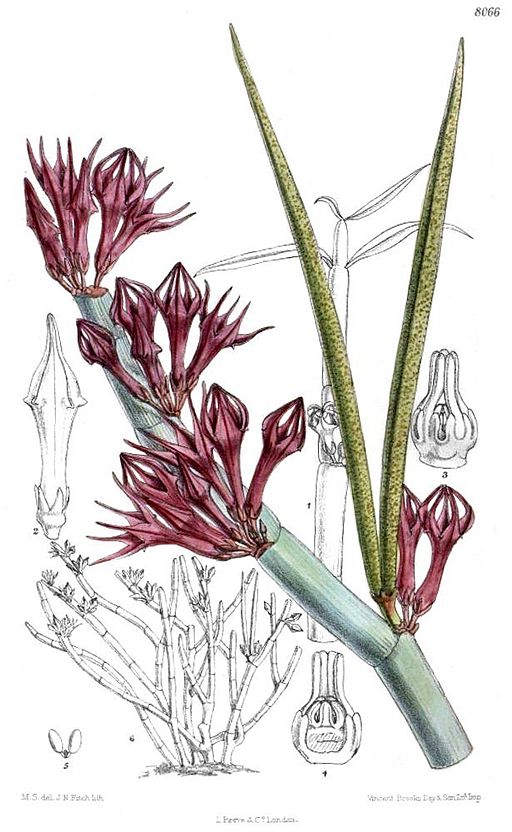Classification System: APG IV
Superregnum: Eukaryota
Regnum: Plantae
Cladus: Angiosperms
Cladus: Eudicots
Cladus: Core eudicots
Cladus: Asterids
Cladus: Lamiids
Ordo: Gentianales
Familia: Apocynaceae
Subfamilia: Asclepiadoideae
Tribus: Ceropegieae
Subtribus: Stapeliinae
Genus: Ceropegia
Species: Ceropegia fusca
Name
Ceropegia fusca Bolle
References
Bonplandia. Zeitschrift für die gesammte Botanik. Officielles Organ der K. L.-C. Akademie der Naturforscher. Herausgegeben von E. G. Seemann... Hannover, London, Paris 9:51. 1861
USDA, ARS, National Genetic Resources Program. Germplasm Resources Information Network - (GRIN) [Data from 07-Oct-06]. [1]
Ceropegia fusca is a flowering plant in the genus Ceropegia (Apocynaceae). It is endemic to the Canary Islands, where it grows on Tenerife (especially the Macizo de Anaga area), Gran Canaria, and La Palma in the Tabaibal-Cardonal zone at up to about 600 m altitude.
Description
The Ceropegia fusca plant forms erect woody stems reaching to 1.5 m tall. The leaves are deciduous, arranged in opposite pairs, each leaf narrow, 5 cm long. The flowers are produced in clusters of two to five in the leaf axils; they are tubular, reddish brown, with five narrow lobes joined at the tip; flowering is in spring to summer. The fruit is a pair of large capsules up to 10 cm long.
Cultivation
Ceropegia fusca is used as an ornamental plant in dry and drought tolerant water conserving gardens. It requires hot conditions to grow well.
References and external links
Pérez, M. Á. C. (1999). Native Flora of the Canary Islands. Everest, León. ISBN 84-241-3555-5.
Sightings of Ceropegia fusca
Retrieved from "http://en.wikipedia.org/"
All text is available under the terms of the GNU Free Documentation License


